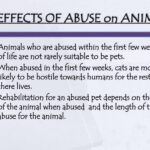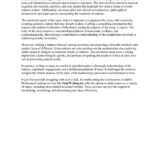In a world saturated with visual stimuli, billboards rise as towering sentinels of communication, dominating the urban landscape. These massive displays serve multifaceted purposes, from promoting consumer goods to heralding local events. Yet, amidst the myriad images of fashion, fast food, and entertainment, the haunting specter of animal cruelty remains conspicuously absent. One must ponder: why does the plight of our voiceless companions not grace the very billboards that capture our daily commute? The answer may lie far beneath the surface, entwined with societal perceptions, discomfort, and the stark disconnect between human and non-human lives.
At first glance, the absence of animal cruelty campaigns from billboards may seem merely a matter of aesthetics or marketing strategy. After all, such a grim topic could deter potential customers or audiences. However, as we peel back the layers, deeper truths unfold. A glaring observation arises: society often finds it easier to ignore the suffering of animals than to confront the uncomfortable realities of indignity they face. Images of battered bodies or stark realities are never easy to digest, and thus, basic human inclination is to shield oneself from discomfort.
Moreover, the exploitation of animals, whether through industrial means or individual maltreatment, operates in the shadows of our collective consciousness. Animal cruelty exists in the crevices of society, thriving in anonymity while we choose to veer our gazes elsewhere. This avoidanceism results in a narrow tunnel—one in which animals’ voices are muted, their stories untold. Billboards, thus, could act as powerful conduits of awareness, compelling passersby to acknowledge these hidden tragedies. Yet, the question remains: why do the stories of these innocent beings seem to lack a prominent stage?
One underlying reason is the pervasive normalization of animal exploitation within our culture. Popular narratives often frame the relationship between humans and animals through a lens of ownership and consumption. From entertainment to culinary delights, animal presence seems relegated to a utilitarian function—a tendency that desensitizes the public to their suffering. The very fabric of society industries—whether food, fashion, or entertainment—unconsciously perpetuates a cycle that seemingly justifies animal cruelty. In this context, exposing such transgressions through billboard campaigns might threaten the status quo, leading to societal pushback.
Furthermore, there is a distinct lack of cohesive activism that unites various animal rights organizations. Each group often pursues disparate missions, leading to fragmentation instead of a unified message. A well-designed billboard campaign has the potential to transform mundane cityscapes into platforms for social change. However, without a singular focus, the message can dilute. A concerted effort to amplify the voices advocating against animal cruelty could pave the way for more impactful displays, resonating with the public’s conscience.
A dichotomy exists between the glamorized images synonymous with advertising and the stark, unvarnished truths of animal cruelty. Marketers have perfected the art of storytelling, deftly weaving narratives that engage consumers’ emotions, while animal Advocates often rely on stark imagery of suffering. This disjunction in storytelling diminishes the potential for compelling visuals that could evoke empathy. To elevate the dialogue surrounding animal cruelty, it is imperative to explore creative methodologies—transforming depictions of anguish into messages of hope, rehabilitation, and the intrinsic value of all beings.
Education, too, plays a pivotal role. The general public might feel overwhelmed or helpless when confronted with harsh realities without context or guidance. Educational initiatives can help bridge the gap, ensuring that the audience not only understands the cruelty but also knows they can contribute to change. Engaging visuals could be paired with pragmatic solutions—local adoption events, volunteer opportunities, or campaigns for stronger animal welfare laws. The narrative of suffering doesn’t need to end bleakly; we can inspire individuals to become a part of the solution.
Moreover, social media, a contemporary billboard of sorts, has proven to be a transformative medium for activism. However, social platforms cannot wholly replace the tangible impact of a physical billboard. The visual permanence of a billboard, positioned in human trafficked locations, can facilitate ongoing conversations. It serves as a reminder—a daily encounter with a cause that begs for attention. Instead of visual clutter, why not choose to pepper our environments with messages that elevate both awareness and empathy towards our animal counterparts?
Consequently, as we examine how to address these deep-seated issues, the responsibility falls upon all of us—individuals, organizations, and governments alike—to take a stand. Creating a dedicated platform for animal welfare through billboards could not only serve as a consistent reminder of their plight but may even catalyze a broader cultural shift. Exposure can lead to awareness, awareness can incite action, and action can bring about change.
In conclusion, the path to featuring animal cruelty campaigns prominently on billboards necessitates a fundamental reshaping of perceptions. We must begin associating the silent suffering of countless beings with urgency, compelling a dialogue that demands visibility and action. As we cultivate a collective consciousness that values the lives of all beings—be they human or animal—the potential to transform our cities into beacons of compassion emerges resolutely. Perhaps one day, the question will shift from “Why don’t we see animal cruelty campaigns on billboards?” to “How can we ensure they are part of every public conversation?”







